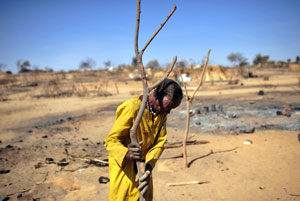
DR Congo
Ethnic hostility, fed by inter-group violence in Congo in addition to the impact of genocide in Rwanda and Burundi, has produced an environment where groups fear their entire existence is under threat and engage in pre-emptive attacks against civilians. More»

Sudan
Sudan includes the 15 states formerly known as northern Sudan. The Sudanese government has been responsible for systematic attacks on entire civilian populations during several internal wars since the country’s independence in 1956. Today, Sudan’s civilian population faces threats from continuing and potentially new violence. More»

South Sudan
South Sudan became an independent country on July 9, 2011. From 1983-2005, civil war between north and south Sudan killed at least 2 million people, mostly civilians, and displaced more than 4 million. The principal victims included the Dinka and Nuer peoples in southern Sudan and the Nuba in central Sudan. More»

Bosnia-Herzegovina
During the conflict (1992-95) an estimated 100,000 people were killed, 80% of them Bosniak civilians. In July 1995, Bosnian Serb forces killed as many as 8,000 Bosniaks from Srebrenica. It was the largest massacre in Europe since the Holocaust. More»

Rwanda
Between April and July 1994, at least 500,000 Tutsi were killed when a Hutu extremist-led government launched a plan to murder the country's entire Tutsi minority and any others who opposed the government's policies. More»

Burundi
Civil war between Burundi's ruling Tutsi elite and rebels from the majority Hutu population began in 1993. It resulted in the death of an estimated 300,000 people, the flight of 500,000 refugees, and the internal displacement of 800,000 persons. More»

Chechnya, Russia
In 1999, a massive Russian military force entered Chechnya, devastating it. Russian President Vladimir Putin proclaimed Chechnya pacified by Spring 2000. But peace remained elusive for Chechen civilians, victims of a continuing war of attrition. More»
